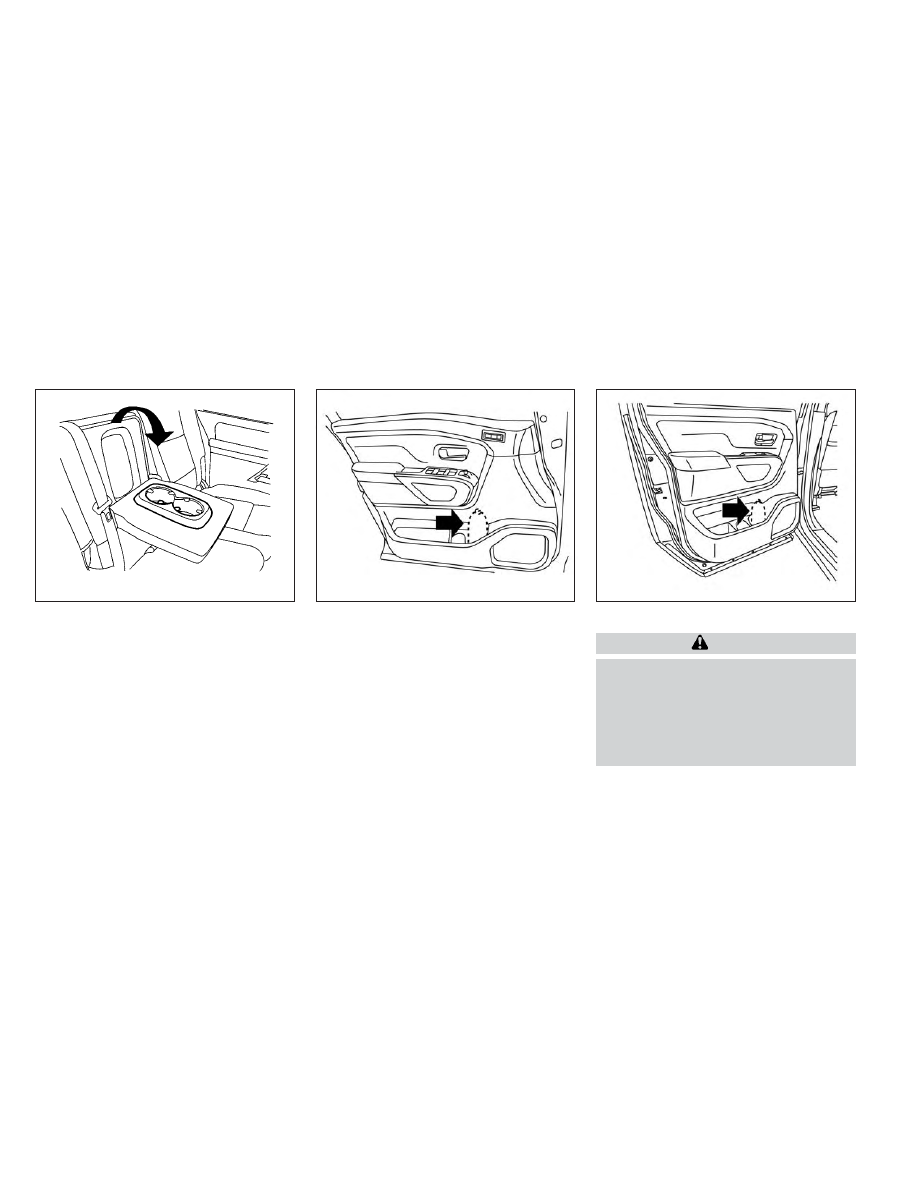Nissan Titan (2023 year). Manual in english - page 12

CAUTION
•
Do not use bottle holder for any other
objects that could be thrown about in
the
vehicle
and
possibly
injure
people during sudden braking or an
accident.
•
Do not use bottle holder for open liq-
uid containers.
LIC0556
Rear seat bench (if so equipped)
LIC3396
Front bottle holder
LIC3707
Rear bottle holder
Instruments and controls
2-81